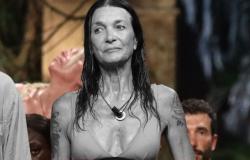The good news is that The Fall Guy works, great, it will make you fall in love with Ryan Gosling again in case you had already forgotten his Ken in Barbie and will give you the full package of what you expect from a popcorn movie: action, twists, romantic comedy and action, punch lines, cameos, twists. Universal confirms itself as the major which, without too much fanfare, scores one coup after another. In a box office orphaned of superheroes and with an audience ready to move on and with a great desire to go to the cinema to have fun, this title could make a splash. He would deserve it, given how much he shows he loves cinema, how much attention he produces and creates it.
The bad news is that this time I’m also here to ruin your party. I’m writing this review more than immediately, with my pupils still dilated the spectacle of stunts, chases and action scenes that characterizes David Leitch’s new directorial effort. A director who defines a professional as a pat on the back. A former stuntman and extremely proud of it, he carved out a role for himself as a producer and director, creating a whole series of films that put the neglected and invisible work of his art at the center. After Atomic Blonde with Charlize Theron, a spy story artfully selected to give as many characters as possible the opportunity to get involved and Bullet Train with Brad Pitt, comes this film inspired by a 1980s television series starring a stuntman.
Gallery
Ryan Gosling is perfect as an action and romantic man
The result is a film that brings together romantic comedy and action film, thanks to the charisma, lovability and talent of Ryan Gosling. He takes on the role of Colt Seavers, a reckless stuntman and a man very much in love with Jody (Emily Blunt), a camera operator who has long been waiting for her chance to become a director. The two have a story, it doesn’t end well, but a second chance appears on the horizon, in the sunny lands of Australia. To re-enter the world of cinema, to win back the heart of her beloved, to help her shoot her first important film, spectacular, with “scenes from Comic Con room H”.
Except that the star of the film for which Colt acted as a stunt double for years, Tom Ryder (Aaron Taylor-Johnson), has disappeared. Processing hangs by a thread, so much so producer Gail (Hannah Waddingham) asks Colt to find the missing actor. What follows is a plot, a corpse, a trained dog that only responds to orders in French and obviously more or less planned, very spectacular stunts.
The film itself works, and how. We laugh, a lot, we have fun, just enough. Ryan Gosling has a character with his own energy, never toxic, never overwhelming, capable of tenderness, without losing a bit of his charm. It is the continuation of a discussion that began with the character of Ken, the perfect companion to a romantic comedy set in the post MeToo era. Always supportive of his partner (also for work issues as well as in the emotional sphere), understanding, able to show her weaknesses, albeit with a bit of reticence.
The Fall Guy seduces with the mix of characters of the protagonists: Gosling always accommodating, Blunt edgy in a fascinating way. Emily Blunt does her and the rest of the characters narrowly manage to escape a certain way of being too trod the supporting characters.
Stunts in the age of deepfakes
On paper it is a love letter to cinema, to its behind the scenes, even when it takes on absurd tones. On the table there is not only the role of stunts, the madness and perseverance of a job that hurts physically, from which you emerge first of all doing ok with your thumb. There is everything behind the scenes made up of walkie talkies, workers at the sides of the camera, picnic hats, commercial and production logic. There’s a lot of talk about how cinema is made in The Fall Guy, which from the opening credits to the closing ones, through its voice overs self-proclaimed as unnecessary, continues to reflect on the codified nature of a behind the scenes which requires attention, patience and expertise to give eight and a half twists of a vehicle on itself (a record, they tell us in the closing credits).
The Fall Guy tries to go a little further too. Reflects on the friction between special effects and stunt work on set, perhaps for the first time in commercial cinema, it stages one of the fears of those who work and live in cinema: that of be replaced by deep fakes. He associates these technologies with a discourse, indeed very hypocritical, that has been circulating a lot in Hollywood in recent years. That of the performers who do their own stunts, associated with cinema “made from life, without retouching” (it is no coincidence that there is a very clever quote from Tom Cruise in the film).
However, it’s the same story as The Fall Guy warns us against believing blindly what we see on the screen. Ultimately the film uses these themes for pure narrative value, without going beyond the simple observation of the existence of these problems. It’s not little, but it’s not that much either.
What The Fall Guy does really well is use all the stylistic features of contemporary cinema, refining them to the extreme. It is more than a tribute to cinephilia, it is so derivative of something else that, if I were to show it to a person who is not up to date on the cinematic front, I would spend half the time stopping the film to take stock of the references thrown in by the film.
It’s such a meta-narrative title that it doesn’t even make up a story. His history of the story, the plot of the film that Jody is shooting and his homages on a visual level (above all, obviously, Mad Max: Fury Road) are a sum of references that never become something else. The Fall Guy is a film that reuses and recycles a lot, but never so organically, never with so much flair.
The FallGuy soundtrack tells us how derivative the film is
An example is the film’s soundtrack. Instead of inventing a symbolic song, of launching a pop song that becomes the song of The Fall Guy, the film resorts to a continuous, obsessive, real catchphrase use of the song I Was Made For Lovin’ You by Kiss. Followed by Darkness, Bon Jovi, Scorpion, a whole battery of very catchy, very famous rock and metal pieces, until the inevitable emotional moment on Taylor Swift’s All Too Well. The Kiss song is so recurring, continually re-edited and quoted to match the stunts, that in the two-hour film you soon get tired of hearing it. Consumer music is consumed, used for its extreme catchiness, for the familiarity, for the rhythm, for the emotional baggage it brings with it. Emotional baggage that is never modified or enriched, overturned with an unexpected association. The decades from which hits are drawn are always the same: ’70s, ’80s, ’90s. I won’t even mention karaoke.
So in cascade we have the adorable dog to whom nothing bad happens, the supporting male character who supports (precisely) a female character who wants to assert herself but somehow he is always contained, naive and funny in his taking his space. Jody is strong, but she is never imposing, never ambitious. Her producer says it: she is naive, she is malleable.
The romantic relationship between the two protagonists should be at a higher level than that of falling in love: they are adults, they were together, they had a history from which he ran away and now he has to make amends. She was ready for the next step, but it’s unclear what it is. There is no eroticism, there is no affection, there is no hint of the desire to have a family, to have a child. They are very much in love, they argue in an adorable way, but their emotional and sentimental relationship is on the same level as a high school couple who breaks up and gets back together. It’s a relationship that leaps from love to friendship, that stays in its own comfort zone without sudden changes, without impulses, without vertigo.

The opening scene in this sense is exemplary, given that Leitch cannabisizes himself. There is a voice-over that ironically comments on what is happening, which destroys the fourth wall in terms of sound, while talking about the invisible effort of the stuntmen. The images of Atomica Bionda and scroll on the screen of other films produced by 87Eleven, the production company he founded in 1997. Whose logos recur during the making of the fake film of the film that Jody is shooting. It’s not like anyone explicitly states it, but the suspicion is that we are dealing with a Stuntman Cinematic Universe.





